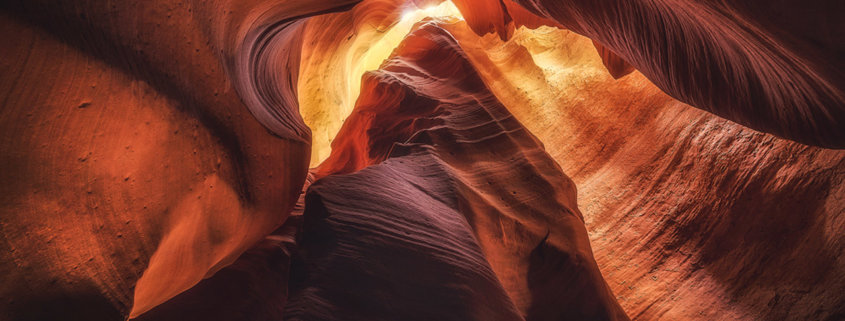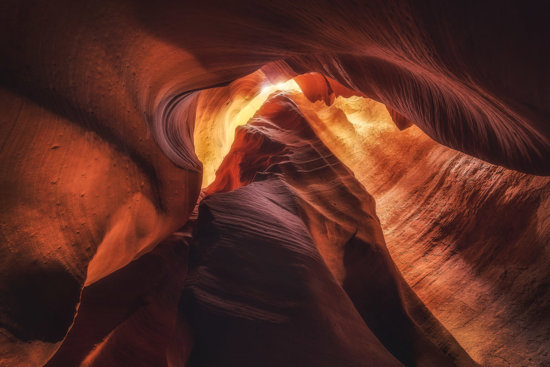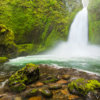What’s in Peter Coskun’s camera bag?
Fortunately, there is no shortage of camera bags options on the market. However, that makes the quest to find the perfect camera bag more complicated. For landscape photography, the camera bag needs to be durable suitable for different climates. It needs to have plenty of capacity for equipment and supplies.
First things first, you should have a camera bag that fits your needs and style of shooting. Not everyone is going to need a behemoth backpack that can be used as a multi-day pack. Some may need just a shoulder bag. For me personally, I prefer the traditional camera backpack. There are a lot of different camera bags, some are indeed better than others. Do your research prior to choosing your bag as the features of the bag can allow you to carry exactly what you need, plus extras.
One thing that I always kept in mind when looking for a camera bag, is the option to store a tripod directly on the back of the pack. This allows for an even distribution of weight which makes the pack much more comfortable.
In the above photo I am standing over a cracked mud playa in Death Valley with my Clik Elite camera bag. Note the little pouch at the bottom of the bag to store the tripod feet directly on the back and strap the top of the tripod itself. An important feature for my personal needs.
Photography Equipment
Camera Lenses
What is a camera bag without the camera gear inside? As a landscape photographer, I’ve found that there are really only three lenses that you will likely use (of course, creativity may find you with much more than three). These lenses range from a typical wide angle zoom (16-35mm or equivalent), a mid range zoom (24-70mm), and a medium telephoto zoom (70-200). Usually, this range is between 16mm and 200mm, but you can choose a much wider lens and a much longer zoom range. Depending on the camera bag you own, these items should easily fit into your pack. Some bags have specific areas to store the camera gear itself and allow other storage areas for non-camera related gear. Keep in mind, that one of these lenses is usually already attached to your camera, so it is more than likely you have space for another one, perhaps a macro lens.
Camera Batteries and Memory Cards
Aside from our camera and lenses, it is always wise to keep a handful of extra batteries and memory cards on hand. Most camera bags have little compartments to fit these smaller items as well as to keep them organized. A memory card case can also come in handy so you don’t have those CF or SD cards just floating around.
Camera Flash
While I don’t use a flash as a landscape photographer, some others may want to keep one in their bag especially if they shoot portrait or low light scenes where the extra light can come in handy.
Photography Filters
You may also want to keep a number of filters in your bag. Anything from a circular polarizer to neutral density filters can come in handy to get that perfect shot. Some filters also require special filter holders, so make sure you keep the holder in the bag at all times so you can actually use the filters.
Other Photographic Equipment
A remote or intervalometer also comes in handy for those long nights and time lapse scenes. During the summer months, I keep a lightning trigger on hand in case I find myself photographing those incredible afternoon storms. Lens cleaning cloths – either lens wipes or micro fiber cloths – frequently come in handy and are small enough to fit into the tiniest compartments. A rocket blower and lens pen are also nice to have in addition to the lens wipes. We have to remember to keep our gear clean in the field!
In places like sandy slot canyons (above photo), lens cleaning tools are essential to keeping as much sand and dust out of your gear as possible
Non-Photographic Equipment
Often when out in the field, there are many non-photographic items that are needed to make the best of your time shooting.
- First aid kit – This should be a no-brainer. But I’ve run into people who’ve had to borrow items out of my pack (another great reason to keep one). Small tweezers and Neosporin should be part of this kit. Also, make sure the contents inside have not expired. It is important to refill the first aid kit when if the medication has expired and when you end up using the supplies on your photography adventure.
- Small pack-able jackets – These are great if you are out late and find yourself getting a bit chilly. Many midweight down jackets pack into themselves which saves some space. It is also a great idea to have a waterproof jacket in your camera bag to stay dry in case of an unexpected rain storm.
- Gloves – Depending on the season, a pair of gloves may be handy along with a beanie or balaclava (face mask). If you are expecting cold wet weather, I would recommend that you carry waterproof gloves.
- Headlamp – Since I am mostly up before the sun and out after it has set, a headlamp is needed to make sure I can see where I am going in the dark. A headlamp will also allow you to work in the dark without using your hands. I also strongly recommend turning the headlamp off if you are using long exposure or doing night photography. This will prevent any accidental ambient light from ruining your otherwise perfect exposure.
- Snacks and water – I always have these stuffed into my pack; sometimes more than I need in case of emergencies.
- Sunscreen – With the amount of time spent in the sun, sunscreen is a must and is easily packed away into the smaller compartments.
- Tools – Small Allen wrenches or hex keys for your tripod and base plates also come in handy and are small enough to pack no matter how much you jam in there.
- Business cards – I also happen to carry a handful of business cards in my pack. Often times when I am in relatively busy locations and people see me with my gear, they ask if I am a professional. It always results in handing out a card and potentially making a new client.
- Comb – I also like to carry a comb in my bag. This is mostly for wandering around cholla gardens in the desert, but you also never know when you need to look sharp.

My camera bag can fit extra jacket, wireless remote, headlamp, and tools for Night photography excursions – Death Valley National Park, California
I was glad to have packed an extra jacket, wireless remote, headlamp, and tools to make night photography photos (above) comfortable.








